
Here are suggested study plans for you
to make the most of the course
IELTS Academic Writing Task 1 often implies the candidate has to describe line graphs, bar charts, tables and multiple charts that have a lot in common. These visuals contain numbers and percentages, which makes them different from maps and processes. In order to score high in IELTS Academic Writing Task 1, you have t0 give an accurate and strong description as well as analyse the provided charts properly. Writing 150 words is not enough to achieve the desired band. You should avoid repetition, i.e. demonstrate the range of vocabulary. What words and expressions to use to describe and emphasize the changes, similarities and differences in the data is going to be discussed below.
increase / rise significantly = go up a lot
rocket/soar = go up quickly to a high level
reach a peak = get to a maximum
increase / rise slightly = go up a little
decrease significantly = go down a lot
plummet / plunge = go down quickly and suddenly
decrease slightly = go down a little
Take IELTS with confidence
Start your IELTS Grade online course
reach a low = go to a minimum
fluctuate = change all the time
remain stable = not change
halve = to reduce by half
drop/dip / show a downward trend/decline = go down, to gradually become less, worse, or lower
grow/surge = to increase suddenly and greatly
recover = to improve after a difficult period or after falling in value
READ ABOUT: 250+ commonly misspelled words in IELTS Listening

sharply / dramatically = quickly
gradually / steadily = slowly
considerably / significantly = greatly
slightly / insignificantly / marginally = a little / not much
nearly / roughly/ around = approximately
sharply, steeply, dramatically, significantly, substantially, considerably, wildly (fluctuate wildly) = very much
upward = going up
downward = going down
overall = describing changes in trend over the whole period
slight/gradual/modest = describing small changes
marginal = describing very small change
consistent/steady/constant = steady
significant/dramatic/sudden/dramatic/substantial/sharp = describing a degree of change
Writing a good description demands not only knowing a wide range of vocabulary and grammar, but also applying certain strategies. Go to our online IELTS preparation course where you will be able to build your IELTS Academic vocabulary, go through a lot of practice in using the vocabulary, grammar and strategies, analyse sample answers, and write your own reports. Immediate feedback from our IELTS experts will help you build confidence and tackle IELTS Writing Task 1 with flying colours.
Subscribe to our IELTS digest
READ ABOUT:
Most candidates think of IELTS Writing when they hear this word combination. Spelling mistakes influence your score in this section. However, it is often a surprise for test-takers that spelling really matters for the IELTS Listening section as well. To tell the truth, spelling mistakes can ruin your score in this section. While you are still preparing for the IELTS exam, it is a good idea to learn the most common mistakes made by candidates and avoid them.
Where can you make spelling mistakes? In IELTS Listening there are various types of questions such as multiple choice, note completion, matching, labeling a plan or a map, etc. In IELTS Listening, you are given one mark for each correct answer, i.e. the correct spelling matters. You have to be all ears in all parts of the Listening section but spelling mistakes are often made when candidates write their answers to labeling and note completion questions. You might have to write down such things as key words/phrases, lists, headings/subheadings, numbers/bullet points, names/surnames, places/times/prices, addresses, telephone numbers, stages, etc. We have grouped spelling mistakes by different types.
Candidates are often confused under pressure and they might make this mistake when they are not sure how many letters to write: one or two. This group of words is the largest. Here are some examples:
Take IELTS with confidence
Start your IELTS Grade online course
In English there are many letters that are not pronounced in words. However, you have to write them:
When it comes to the combination of these two letters, even advanced learners often make spelling mistakes. However, you can easily remember how to write the words properly with the help of the following mnemonic: ‘I before E except after C’. For example:
Of course, there are exceptions to every rule in English:
Watch out when you write the following words:
READ ABOUT: 8 strategies to achieve a perfect score in IELTS Listening

These are the words that sound the same. However, their spelling is different. Here are the most common pairs of words:
accept – except
plain – plane
peace – piece
scene – seen
stationary – stationery
steal – steel
sauce – source
sore – soar
for – four – fore
their – there – they’re
hour – our
band – banned
capital – capitol
chili – chilly
choral – coral
cite – site – sight
council – counsel
die -dye
discreet – discrete
daft – daught
flue – flew -flu
genes – jeans
hole – whole
marshal – martial
weather – whether
whose – who’s
you’re – your
loose – lose
affect – effect
principle – principal, and many others.
READ ABOUT: How to organize your responses on the IELTS speaking exam?

Many English words are spelled differently when they become another part of speech or when verbs are used in different tenses. For example:
benefit – beneficial
influence – influential
circumstance – circumstantial
pronunciation – pronounce
argue – argument
decide – decision
refer – referring
frolic – frolicking
occur – occurred
unity – unify
justice – justify
significant – signify
maintain – maintenance
violent – violence, etc.
While preparing for IELTS, you can still learn how to avoid making spelling mistakes. Here are some tips to help you:
Tip #1. Watch out for words with double letters. If you are not sure about the spelling, double check.
Tip #2. Always make sure you use the correct form of the verb.
Tip #3. Know which word you want to use. Check the meaning in the dictionary.
Tip #4. Watch where you place the apostrophe.
Tip #5. Don’t write what you hear. Check the spelling if you are not sure.
Subscribe to our IELTS digest
RECOMMENDED READING:
Describing maps is one of the least common types of questions you may have to answer in IELTS Academic Writing Task 1. Does the approach to this type of question differ from, for example, describing graphs, tables, or answering process questions? Of course, yes, because each type of visual in IELTS Academic Writing Task 1 has different features. Today, we will look closer at map questions and give you tips on how to tackle maps in IELTS Writing Task 1 effortlessly.
When map questions appear on the exam, there will always be two maps. Sometimes, both maps illustrate what used to be in a particular area in the past; sometimes, one map shows what there was in the past while the other one is about the present; also, you might see the maps one of which demonstrates the proposed changes for the future. Regardless of what date you see on the map, your task is always the same:
This means that you will have to describe what changes have / will have occurred and use the proper tenses to describe them.
What’s on the maps? They usually depict several images of cities, towns, countryside or other areas at different stages of their development, and you have to describe changes which happen to these places. For example, some new/old objects may appear or disappear, others may be relocated to a different place or increase/decrease in size.
Here is how the task is usually worded on the exam:
You should spend about 20 minutes on this task.
The diagram shows Rampart street today and the plan for changes to the street in 2035.
Summarise the information by selecting and reporting the main features, and make comparisons where relevant.
 READ ABOUT: IELTS language for describing maps
READ ABOUT: IELTS language for describing maps
Step 1. Analyzing the task and maps.
The first thing to do is reading the task carefully and finding the key information. You should look at WHAT changes happened as well as WHEN:
There can be three possible options:
In our sample task, the maps show Rampart street now and in the future. This can also be understood from the visual because there we can see “now” and “in 2035”.
Now, it’s time to look at the maps and identify the main changes: what objects have appeared, been demolished, constructed, relocated, expanded, etc. Then, decide which changes were mainly made. You have to decide on the general character of changes and what happens to the objects and in different parts of the maps: objects appear or disappear or change.
Take IELTS with confidence
Start your IELTS Grade online course
Step 2. Planning.
After you have identified the main changes on the maps, group them by type or by the part of the place. For example, the objects have appeared/disappeared/changed or the changes took place in the north/ south/ north-east/ south-east of the town/city, etc.
As you group the changes by type or place, choose the details on the map to illustrate these changes.
As you can see on the maps above, many new objects have been added, and some of the old objects have disappeared. Can you spot them by looking at the maps?
Step 3. Writing the description.
Basically, the structure of the description will be the same as for process questions or other visuals. However, the content will depend on what changes there are to describe:
| MODEL 1 | MODEL 2 | |
| INTRODUCTION | Paraphrase the task and give an overview of changes. | Paraphrase of the task. |
| BODY PARAGRAPH 1 | Compare changes in the first group by giving a topic sentence and details. | Describe changes to existing objects. |
| BODY PARAGRAPH 2 | Compare changes in the second group by giving a topic sentence and details. | Describe changes to new objects. |
| CONCLUSION (optional) | Write a conclusion about the most striking changes. This kind of conclusion is optional but will be very useful if your word count is lower than 150 words. | Write an overview of trends. |
Both models have all the necessary components of a good description. Both ways of organizing your Writing Task 1 are appropriate, as they address the task and meet its requirements in terms of Task Achievement:

There are also other things to keep in mind while writing your response:
READ ABOUT: IELTS Pronunciation guide
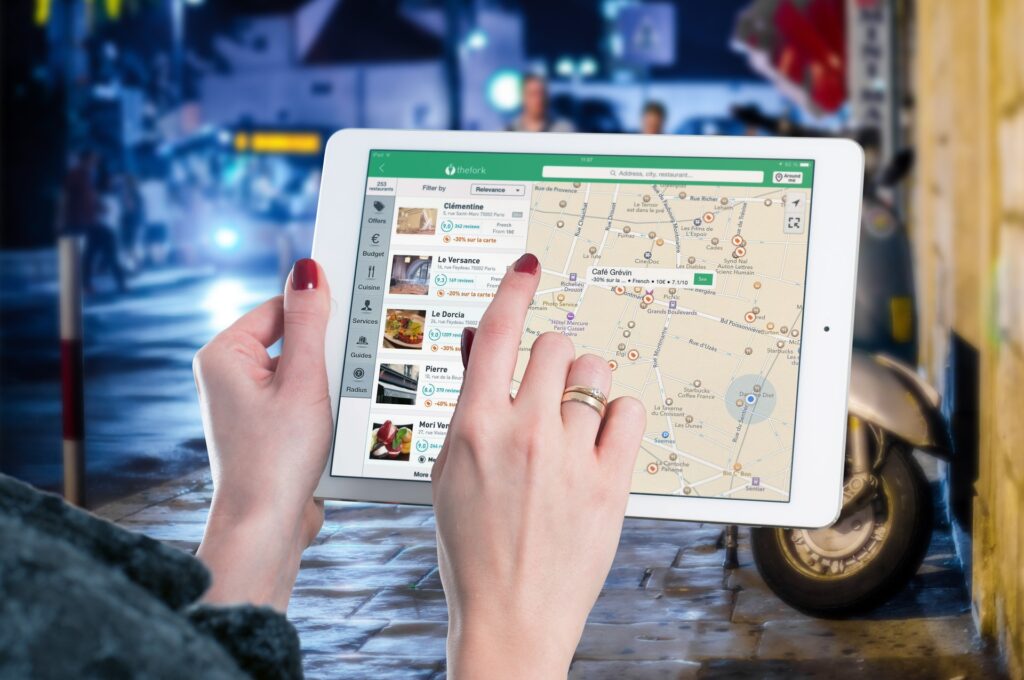
Step 4. Checking your writing.
After you write your description, don’t forget to make sure:
Go to our online IELTS Academic self-study course to see sample answers, and to practice writing your own response. You will also get access to IELTS Knowledge Bank with strategies and language for IELTS Writing. You will familiarise yourself with other types of maps, and we will guide you through the process of writing your own response – from task overview to writing practice. Finally, you will write your description under exam-like conditions, our AI will check your writing, and you will receive immediate feedback on your writing as well as have an opportunity to analyze the model answer and compare it with yours.
Subscribe to our IELTS digest
READ ABOUT:
In IELTS Academic Writing Task 1 candidates are required to describe different visuals: maps, line graphs, bar or pie charts, tables, etc. Flow-charts or processes are also on the list. Although they do not often appear on the exam, you have to know how to answer process questions. Each type of visual has its own main features, i.e. the strategies for describing them differ. What do you need to look at in flow-charts? How many steps are there to complete the task? These and other questions are to be answered today.
The good news is that process questions are easier to answer. Here is why. Unlike the other types of questions in Task 1, where you often have to deal with one or two visuals, be able to select and describe the main trends as well as compare them, in process questions you have to describe all stages of the process step by step, showing the connection between them. However, this doesn’t mean that no preparation is needed.
In IELTS Writing Task 1, you can come across two types of processes: natural or artificial (also called ‘man-made’). Examples of natural processes can be the movement of water on, above and below the surface of the Earth, the life cycle of a hummingbird, photosynthesis, etc. The artificial processes might include recycling plastic bottles, building energy-efficient houses, manufacturing bricks, producing Christmas toys using 3D printing, etc.
Natural process sample task:
The illustrations show the lifecycle of hummingbirds. Summarize the information by selecting and reporting the main features and make comparisons where relevant.

Artificial process sample task:
The flow-chart shows how a Christmas toy is produced using 3D printing on an FDM (fused deposition modelling) machine. Summarize the information by selecting and reporting the main features and make comparisons where relevant.

Regardless of the type of process, you will get in your Writing Task 1 on the day of the exam, you should follow a certain combination of steps to successfully complete it. For both, the structure of your response is the same as well as the strategy.
READ ABOUT: 10 typical mistakes in IELTS Academic Writing Task 1
Step 1.Analysing the task and the diagram.
Understanding the task is crucial. Otherwise, you won’t be able to answer the question successfully. Read the task carefully and underline the key information. You should find:
Next, look at the images or the flow-chart and identify where the process begins and ends. You will also need to count the number of main steps or stages in the process, and look at what happens at each stage:
After you have decided on how many stages there are, think about what happens at each stage.
Step 2. Planning the response.
As you have found out what each stage of the process does, you have to group the facts from the diagram logically into several parts. Next, analyse details from the diagram to illustrate each stage. After that, decide on the link between the last and the first stages in the process for the conclusion. For example:
| Natural process: | Artificial process: |
Group 1 (for body 1):
Group 2 (for body 2):
|
Group 1 (for body 1):
Group 2 (for body 2):
|
The outcome of all stages:
|
The outcome of all stages:
|
Take IELTS with confidence
Start your IELTS Grade online course
Step 3. Writing a description.
Now, you will have to write a 150-word response. In addition to the planning you did at the previous stage, also think of the following:
We suggest that you use the following structure:
| INTRODUCTION | Paraphrase the task and give an overview of stages. The overview will include information about how many stages there are as well as the first and the last ones. |
| MAIN BODY | Describe what happens at each stage giving details from the diagram. Show connection between the stages. Use linkers of order, referencing, and extending your ideas. |
| CONCLUSIONS | Summarise the main stages by linking the final stage to the first stage. |
READ ABOUT: 25 phrasal verbs to avoid in IELTS Academic Writing
Step 4. Checking.
After you finish writing, check your description for:
This is a very important step in completing IELTS Writing tasks. It is also one of the most effective ways to improve your band score. Read our checklist for efficiently editing your IELTS writing.
In order to see the sample answers for the two IELTS questions we have discussed in this article, go to our online IELTS Academic self-study course with an extensive Writing practice. Remember that you do not need to be an expert in the field you are going to write about. Every process question follows the same format. If you can define if the process is natural or artificial, how many stages there are, what is done and what materials are needed at every stage, what you get in the end, you will definitely write a good overview. Don’t forget to mention how the stages are related and DO NOT write your personal opinion.
Subscribe to our IELTS digest
RECOMMENDED READING:
Although they do not appear quite often in IELTS Writing Task 1, you can get such a task, and you definitely need to know and learn how to describe maps. Depending on the question you will need to describe where the objects are/were / will be on the map and what changes they went through/will go through. We are going to look at some useful vocabulary you can use to describe those changes and other common language for describing maps.
Describing a map for IELTS aims to check whether you are able to describe physical locations. You do not have to be a genius geographer, but you have to give a reasonable description of a place.
As you receive the task, you will have to describe where the objects are located on the map. There may already be the compass points on the map. So, use those cardinal directions and adjectives when describing locations: north, south, east, west, north-west, north-east, south-west, south-east, north-western, north-eastern, south-western, south-eastern, etc.

For example:
You will also have t0 use prepositions of place and other prepositional phrases to describe where the objects are. For example:
READ ABOUT: 10 typical mistakes in IELTS Academic Writing Task 1
Take IELTS with confidence
Start your IELTS Grade online course
It’s important to read the task carefully and spend some time planning your answer. Besides using a wider vocabulary, you will also need to demonstrate your knowledge of grammar. When planning your report, think about the tenses and structures you are going to use.
To describe things that are true now — use present simple passive:
To write about changes which happened by now — use present perfect active/passive:
For things that were in the past, but are no longer true — use ‘used to’:
Add some details using ‘with’ structure:
READ ABOUT: Punctuation for IELTS Academic Writing

You might get different kinds of maps with various objects on them. Here is the language you can use to describe them.
demolish – to completely destroy a building, especially in order to use the land for something else:
flatten – to become level or to cause something to become level:
replace with – to take a place of something, to put something in the place of something else:
renovate – to repair and improve something, especially a building:
build/construct – put together different parts to make something whole:
reconstruct – to build again something that has been damaged or destroyed:
develop – grow or change into something more advanced:
develop into – to build houses, factories, etc. on the piece of land:
extend – to add to something in order to make it bigger or longer:
expand – to increase in size, number, or to make something increase in this way:
relocate – to move something from one place to another:
convert into – to change in form, appearance, operation of something:
modernize – to make something more modern:
open – start, begin:
set up – to arrange or establish something:
remain – to stay in the same place or in the same condition:
To have a more detailed task overview with sample answers, to learn how to build your report, to practice using the vocabulary, and receive the teacher’s comments, join our online IELTS preparation course. We also look at different types of maps and provide you with lots of writing practice. Our AI automatically checks your reports and you get instant feedback from IELTS experts.
Subscribe to our IELTS digest
READ ABOUT:
Prepositions in English are quite tricky, especially when it comes to describing visuals in IELTS Writing Task 1 where you have to avoid making grammatical mistakes. It is important to use them properly in order to achieve a good score for ‘Grammar range and accuracy’ which makes up one-fourth of your marks for the IELTS Writing section.
In this part of the exam, you usually have to describe a graph or map that is showing some change. This means that you have to use the language for describing trends. In this article, we are going to discuss the most commonly used prepositions for describing visuals as well as provide some examples.
AT shows the level or point at which something happens:
Moreover, we can use this preposition after the following verbs before the number:
start, begin, end, finish, peak, remain constant or steady, plateau etc.
Take IELTS with confidence
Start your IELTS Grade online course
TO shows a point which a figure reaches as a result of an increase or decrease:
BY shows how much a figure has changed:
Prepositions TO and BY are often confused. What is the difference between them if the starting point is 100%, for example?
‘It declined BY 10%’ means it only dropped from 100% to 90% (100% – 10% = 90%). BY shows the difference between the two numbers.
‘It declined TO 10%’ means that it was 100% and fell down to 10%, which is a big drop. We mean the end point, which is 10%.
‘It declined to 10%’ is a short way of saying: ‘It declined from 100% to 10%.’
BY also shows who does an action:
IN shows an area in which a change takes place:
As you have seen, such nouns as ‘decrease’, ‘increase’, ‘rise’ and ‘fall’ are followed by the preposition IN. However, if we specify the number, we use the preposition OF after ‘decrease’, ‘increase’:
IN is also used when we talk about specific months, years, quarters, seasons.
BETWEEN … AND … and FROM… TO… show the starting and the finishing point of something, or the maximum and the minimum indexes:
DURING, OVER and FOR show that something was happening from the beginning to the end of a period of time:
UNTIL shows a point in time when something finished:
READ ABOUT: Top 3 IELTS grammar mistakes and how to fix them

Here are the same prepositions used in fixed expressions explained. It’s easier to learn and remember them in phrases.
‘The figures for …’ is easy to be learned as a phrase. It means ‘the index of’.
‘As for’ is a fixed phrase which means ‘Concerning’, ‘Regarding’, ‘Talking about’.
‘Turning to’ is a phrase which means ‘Moving on to’, ‘ Changing the subject to’, ‘Talking about’.
‘In contrast to’ is a phrase that means ‘in comparison with’.
‘At this point’ is a phrase which means ‘at this moment’.
‘By contrast’ is used to show that you are mentioning a very different situation from the one you have just mentioned.
Use ‘compared to/with’ and ‘in comparison with’ for contrasting the two situations or things.
Subscribe to our IELTS digest
READ ABOUT:
Whether you like it or not, grammar is crucial to both IELTS Writing and Speaking because grammar range and accuracy is the criterion that makes up 25% of your score. Obviously, you have to avoid making mistakes while writing and speaking to the examiner. Otherwise, it will be quite difficult and unlikely for you to achieve a higher band. We have selected the most frequent mistakes candidates make on the IELTS exam, and we will also suggest how to mend them.
Some mistakes can be made because of the influence of your mother tongue while others crop up regardless of the language you speak as the first language, and students around the world have these common issues. What are they?
This is a very common mistake even upper-intermediate and advanced students make in their speaking and writing. However, it’s a very basic one and very noticeable. What is considered to be a subject-verb agreement mistake?
WRONG: A person I really admire is my friend Randy. He live in Thailand and he work as a teacher, and he also run a travel blog.
CORRECT: A person I really admire is my friend Randy. He lives in Thailand and he works as a teacher, and he also runs a travel blog.
Don’t forget to add ‘s’ in Present Simple, when talking about ‘he’, ‘she’ or ‘it’ as well as change ‘have’ to ‘has’ for the 3rd person singular.
WRONG: There are two possible solutions. Each have its advantages and disadvantages.
CORRECT: There are two possible solutions. Each has its advantages and disadvantages.
Remember pronouns that always take a singular verb:
each, either, neither, one, no one, nobody, nothing, anyone, anybody, anything, somebody, something, someone, everyone, everybody everything.
However, there are pronouns that always take a plural verb:
both, few, many, several.
For example:
There are two possible solutions. Both have advantages and disadvantages.
WRONG: One of my friends are coming to visit me on holiday.
CORRECT: One of my friends is coming to visit me on holiday.
You should remember that the verb agrees with the subject, i.e. the quantity, as in:
Two of my friends are coming to visit me on holiday.
However, for some quantity phrases you have to pay attention to the noun in the prepositional phrase to decide if the verb is singular or plural:
A lot of people (plural) cycle to work.
A lot of sugar (uncountable) is not healthy.
All of the numbers (plural) are rising insignificantly.
All of the food (uncountable) is homemade and fresh.
Some of the adults (plural) travel to work by car.
Some of the local food (uncountable) is very spicy.
One-fourth of the commuters (plural) drive to work.
One-fourth of the space (uncountable) is occupied by freelancers.
Here are the pronouns that take a singular or a plural verb: some, all, any, most, a lot.
WRONG: The number of bicycles which were stolen remain stable.
CORRECT: The number of bicycles which were stolen remains stable.
In your writing or speaking, you can use relative clauses or prepositional phrases to give more information, and thus separate the subject and the verb in the sentence. What happens then is that candidates in such cases often forget about the subject of the sentence and use the wrong number of the verb. Do not agree the last noun in the phrase or clause with the verb. Make sure you agree the verb with the subject of the sentence.
READ ABOUT: How to work on your IELTS grammar

This often happens in the Speaking section of the exam, particularly in Part 2 where you are often asked to describe some past events or experiences. For example:
“I’m going to tell you about an achievement that I am very proud of. It’s pretty recent so I can still distinctly remember lots of details and my own impressions related to it. It is just a couple of months ago when my boyfriend and I go to Bali on holiday and it is my long-cherished and also long-delayed dream to try scuba diving.”
Why does this happen? More often than not it is the problem lies in forgetting. The thing is that in IELTS Speaking candidates become so focused on their vocabulary, pronunciation, and demonstrating their fluency that they forget about using proper grammar.
How can you fix it? Practice before the exam, record yourself. It’s a good idea to only focus on using the past tenses. Remember, that in the second part of the exam, you are often asked to talk about past experiences. So, when you’re given a card with the task, read it carefully, and while planning your answer, think about grammar you’re going to use to give a response.
Another very common mistake is using Past Simple instead of Present Perfect and vice versa.
WRONG: Over the last 10 years, the number of bicycle commuters increased dramatically.
CORRECT: Over the last 10 years, the number of bicycle commuters has increased dramatically.
WRONG: There have been considerable fluctuations in the number of bike commuters between 2002 and 2005.
CORRECT: There were considerable fluctuations in the number of bike commuters between 2002 and 2005.
The rule is very simple. If we are talking about events that started and finished in the past, e.g. between 2002 and 2005, we use Past Simple. If we are talking about something that started in the past but continues until the present or something that happened in the past but the result is in the present (e.g. “over the last ten years” means that it started 10 years ago and the results are related to present), use Present Perfect.
READ ABOUT: How to organize your responses on the IELTS speaking exam?
Take IELTS with confidence
Start your IELTS Grade online course
Have a look at the following example sentence taken from the cause and effect essay:
Many people think we use ‘will’ for the future, and they are right, but not most of the time.
CORRECT: If ice continues to melt, many species will become extinct.
The part of the sentence that starts with ‘if’ is the condition. The main clause says. ‘many species will become extinct’, and these are the things to happen.
The rule for 1st Conditional is: If+Present Simple, will+verb.
For example:
OR
Will+verb if+Present Simple:
Put a comma after if-clause and before the main clause.
When you imagine a situation, use a different type of conditional:
If+Past Simple, would/could/might/should+verb.
For example:
We have looked at the most common mistakes made even by advanced learners. Remember, the more you practice, the better your grammar becomes. The good news, you still have time to prepare for IELTS and you can do it thoroughly by taking our online IELTS preparation course.
Subscribe to our IELTS digest
ALSO READ ABOUT:
Needless to say, correct punctuation gives the right meaning to the sentence, and its wrong placement can totally change the meaning. How many punctuation marks are there in English? Period, comma, apostrophe, quotation, question, exclamation, brackets, braces, parenthesis, dash, hyphen, ellipsis, colon, semicolon! However, you don’t need to use all of them at the exam. Following the correct usage will make your IELTS writing look more appealing and easier to read.
Punctuation also influences your score. If you don’t use it properly or forget to use some punctuation marks, it will count as a grammatical mistake. Remember, grammar range and accuracy make up 25% of your score. So, it’s better to avoid making any grammatical mistakes in your IELTS Writing. In today’s blog post, we are looking at different types and proper use of punctuation for your IELTS essays and reports. Make sure you remember all of them and practise using them during your IELTS preparation.
Take IELTS with confidence
Start your IELTS Grade online course
At the end of sentences to mark a sentence’s grammatical end. For example:
At the end of abbreviations, such as Mr., Ms., etc., and so on.
You should place the period right after the last letter of the last word in the sentence and leave some space between the period and the first letter of the first word of the next sentence. It might look obvious, but many candidates don’t do this. Start the next sentence with the capital letter.
Using abbreviations in IELTS Academic Writing Task 1 and Task 2 is not a good idea. Instead, write the words out. The exception is for symbols like % and $ which you should use, as they are faster to write and very commonly used, even in formal writing. For example:
In contractions to show that letters are missing, e.g. I’m, it’s, they’ll, who’s. DO NOT use them in IELTS Academic writing. Short forms are too informal:
In possessions to indicate ownership. For example:
READ ABOUT: How to work on your IELTS grammar

To separate items in a list. For example:
To separate clauses by ‘and’ or ‘but’ if they have different subjects. For example:
When the subordinate clause goes before the main clause. For example:
When the clauses give extra, non-essential information:
When subordinate clauses or non-finite comment phrases give additional information. For example:
To introduce lists:
When the second sentence explains or justifies the first sentence:
Use single quotation marks to draw attention to a word:
To refer to titles of the books, newspapers, magazines, films, songs, poems, videos, CDs, etc.
To mark the beginning of the sentence.
For proper nouns: personal names, brand names, nationalities and languages, days of the week and months, public holidays and geographical places no matter where they fall in a sentence.
For titles of books, magazines, newspapers, plays, music, e.g. ‘Oliver Twist’, The Guardian.
Subscribe to our IELTS digest
RECOMMENDED READING:
The Writing section appears to be the most difficult for the candidates who choose IELTS Academic, as it is necessary to show not only a high level of proficiency in academic English, but also the ability to analyze information and express their opinions about a particular subject. According to statistics, candidates from Ukraine receive an average of 5.8 band score for this part of the exam, 6.5 for Speaking, and 6.6 for Listening and Reading, respectively. At the same time, the average band score for all four skills at IELTS Academic in Ukraine is 6.5.
There are two tasks in Writing section, and you are given 1 hour to complete these 2 tasks. In the first task, you need to describe a graph, process, or image. You have to write at least 150 words. In the second task, you must write an essay on a given topic of at least 250 words. Task 2 is more important than Task 1. It is recommended that you spend 20 minutes on Task 1 and the remaining 40 minutes on Task 2. Both tasks aim to test your writing skills in various aspects such as grammar, content, vocabulary, line graphs, tables, charts, etc. Let’s talk more about each of the tasks below.
In the first part of IELTS Academic Writing, you will usually need to describe information that looks like a particular visual object, such as:
line graph

bar chart

table
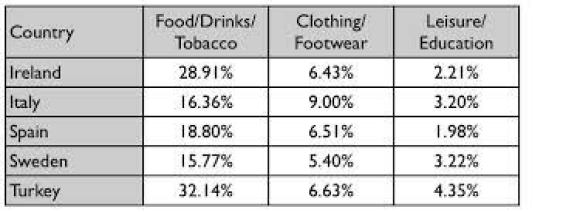
map
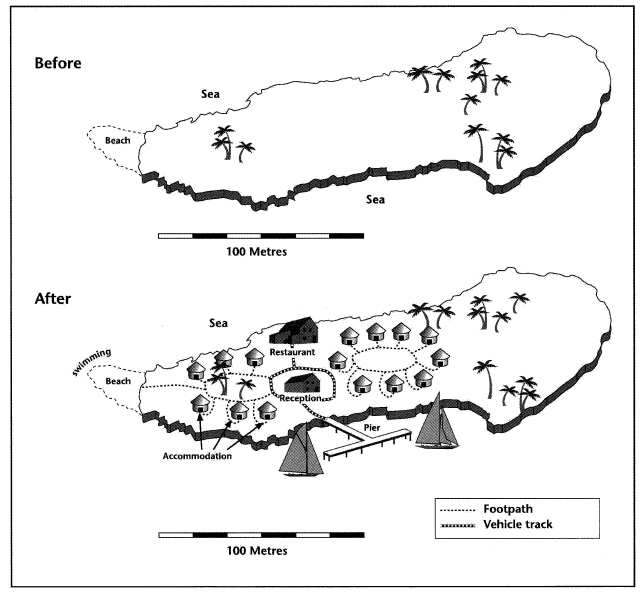
flow chart
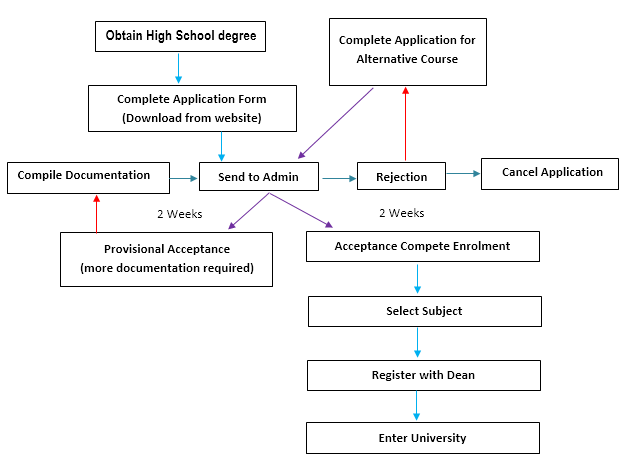
pie chart

IELTS Writing Task 1 sometimes requires you to describe two figures. Before writing your response it is important to ask yourself the following:
For example:
You should spend about 20 minutes on this task.
The charts below show the percentage of their food budget the average family spent on restaurant meals in different years. The graph shows the number of meals eaten in fast food restaurants and sit-down restaurants.
You should write at least 150 words.
Give reasons for your answer and include any relevant examples from your own knowledge or experience.
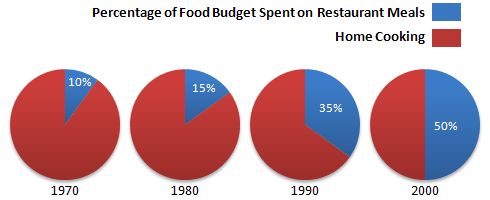
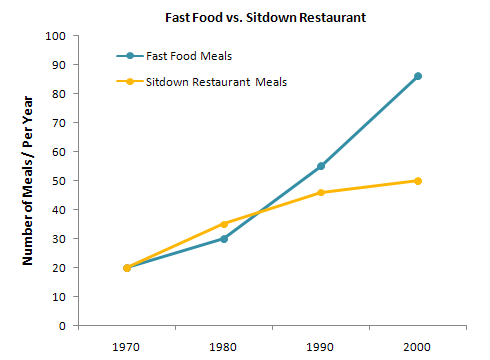
When writing the answer to this task, you should follow a certain structure. The answer text should have: an introduction, one or two main paragraphs and a conclusion. Introductory paragraph briefly describes what a graph or figure shows (1-3 sentences). The following paragraphs highlight basic information. The final paragraph summarizes the most important information (1-2 sentences).
Take IELTS with confidence
Start your IELTS Grade online course
Only choose the most important things. For example, after you have paraphrased the information from the task in the introduction, you can write about the first graph. The next paragraph is about the second graph. This way you will not get confused and the examiner will have no problem with reading your response. In conclusion, we can show how two graphs are related.
You will increase your chances of getting a high score if you:
In the second task, there are several types of essays, each with its own structure, questions, twists and turns. The most common essay types and examples of questions are listed below:
You should spend about 40 minutes on this task.
Write about the following topic:
In the modern world, the image (photograph or film) is becoming a more powerful way of communicating than the written word.
To what extent do you agree or disagree?
Give reasons for your answer and include any relevant examples from your own knowledge or experience.
Write at least 250 words.
Computers are being used more and more in education. Some people say that this is a positive trend, while others argue that it is leading to negative consequences.
Discuss both sides of this argument and then give your own opinion.
In some countries, young people are encouraged to work or travel for a year between finishing high school and starting university studies.
Discuss the advantages and disadvantages for young people who decided to do this.
In some high schools, part of the curriculum requires students to participate in community work such as helping the elderly or disabled.
In what way do children benefit from this?
Do you think it should be part of the curriculum?
Global warming is one of the biggest threats humans face in the 21st Century and sea levels are continuing to rise at alarming rates.
What problems are associated with this and what are some possible solutions.
The number of people who are at risk of serious health problems due to being overweight is increasing.
What is the reason for the growth of overweight people in society?
How can this problem be solved?
Some universities now offer their courses on the Internet so that people can study online.
Is this a positive or negative development?
You will increase your chances of getting a high score if you:
Subscribe to our IELTS digest
Suppose you have finished writing Task 1 and Task 2 on the day of the IELTS exam in less than 60 minutes. Even so, have you completed the IELTS Writing? The answer is ‘no’ unless you have checked your writing for mistakes. This step is crucial in completing IELTS Writing tasks. It is also one of the most effective ways to improve your band score. Why? Within a few minutes, you can correct your mistakes or change sentences you have written. You are able to fix these mistakes if you know what to look for. Here is the checklist for efficiently editing your writing.
The list of items is/are on the desk.
If you know that ‘list’ is the subject, then you will choose ‘is’ for the verb.
When performance on a regular basis, such workouts allow people to strong their immune system and increase metabolism, thus becoming healthier.
‘Performance’ is a noun. However, in the sentence above it was used as a verb instead of ‘perform’. ‘Strong’ is a noun, but the candidate has used it instead of a verb ‘strengthen’.
READ ABOUT: 6 typical mistakes in IELTS essays
Take IELTS with confidence
Start your IELTS Grade online course
The British and American spellings of many English words are also different. For instance:
colour (BrE) — color (AmE)
centre (BrE) — center (AmE)
litre (BrE) — liter (AmE)
theatre (BrE) — theater (AmE)
neighbor (BrE) — neighbor (AmE)
While both of them are equally correct, choose one and stick to it.
READ ABOUT: 10 typical mistakes in IELTS Academic Writing Task 1

Candidates often skip this important aspect of their writing and simply do not check it. However, it accounts for a large part of your score.
READ ABOUT: How to link ideas in IELTS essays
If you know that you often make some kind of mistakes, check your writing for them too. Be sure you check for one type of mistake at a time, because you might get confused if you check all of them at once.
Spend from 3 to 5 minutes at the end of the IELTS Writing section. That is because while writing, we tend not to see our mistakes.
In our course, we have included every single type of IELTS Academic Writing task. Each is followed by a certain strategy — you learn what to do step by step (analyse the task, plan your response, write, and check). You also develop your other skills necessary for the IELTS exam. At the end of the course, do a full mock test in Writing and Speaking and get feedback from one of our IELTS experts.
Subscribe to our IELTS digest